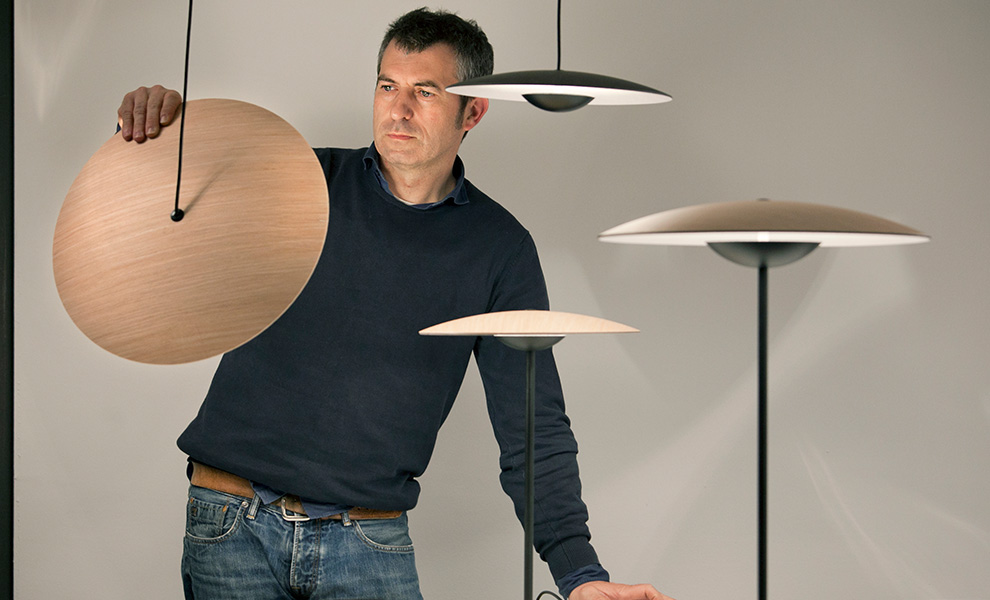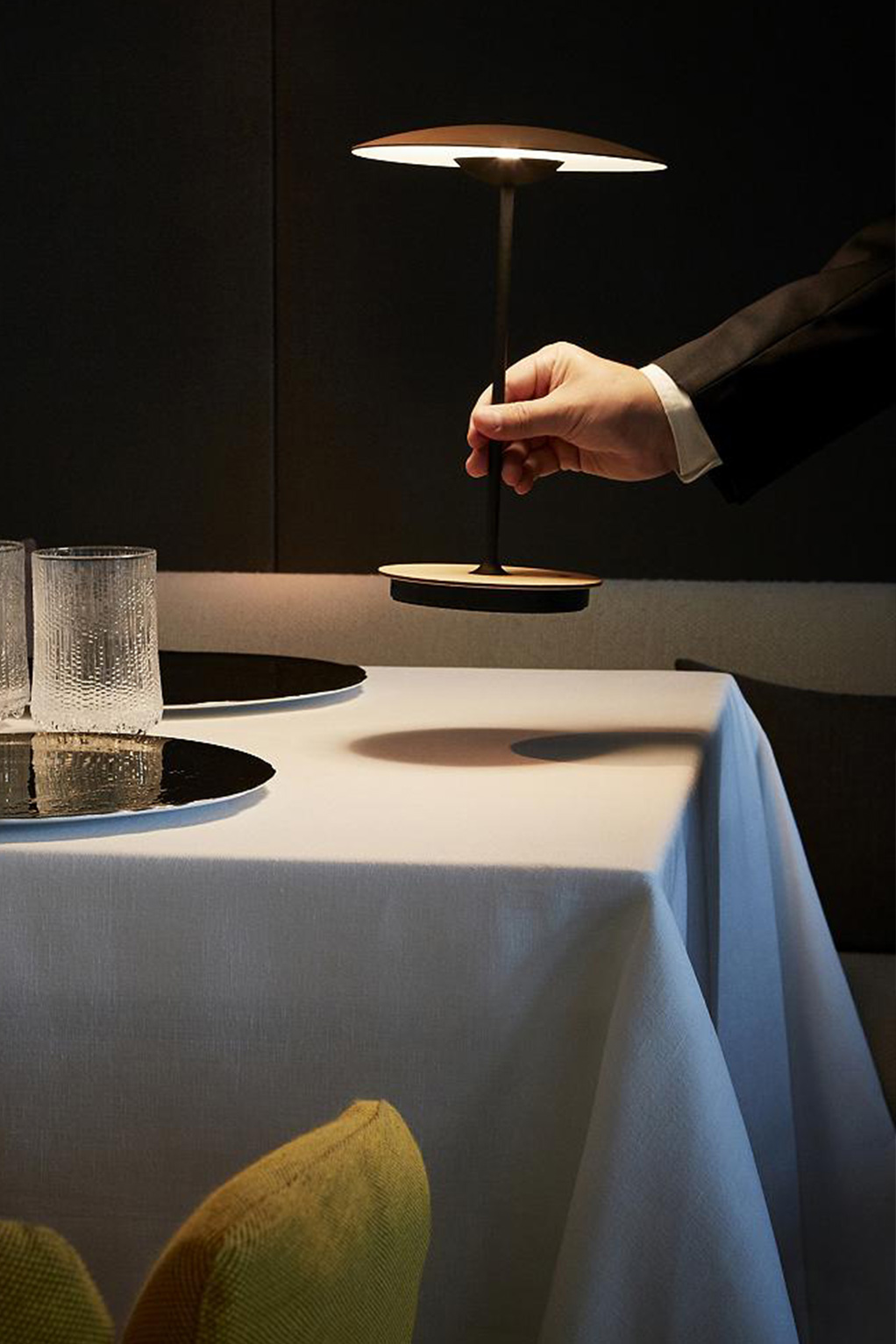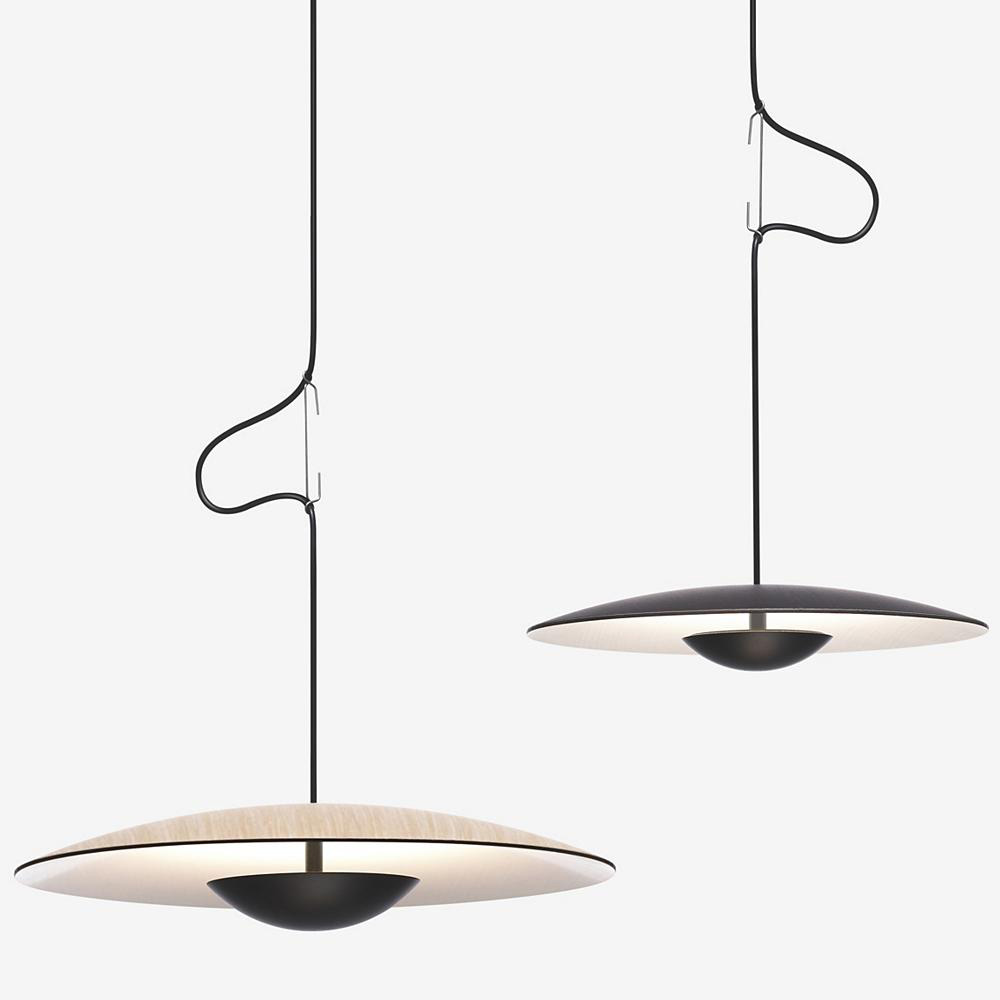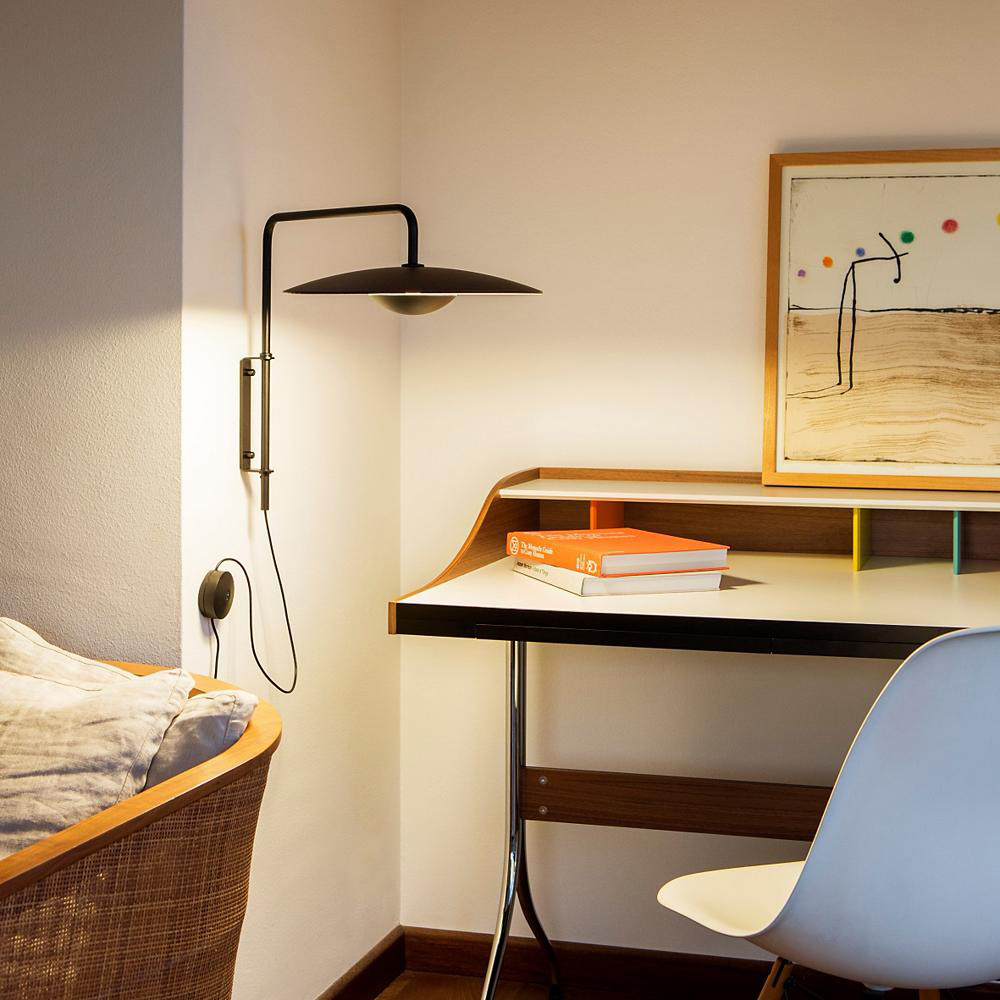Behind the Design
Ginger Collection by Marset
With an ultra-thin shade and bright LED lights, the Ginger Collection found its name and inspiration in the cymbals of a famous drummer (Ginger Baker of Cream). Designer Joan Gaspar gives us an inside look at this brilliant new collection for Marset.
Q&A by Jeff Romero
A Q&A with Joan Gaspar
How did you get your start in contemporary lighting design?
Generally speaking, my design idea has always been contemporary or modern, and in lighting the fact that I had worked and partnered with Lluís Porqueras played a huge role. I think that unlike other agents at the time, Lluís represented an authentic, sincere modernity. He sought simplicity and ease of both shapes and compositions and processes.

Designer Joan Gaspar with the Ginger Collection for Marset.
What are some of your favorite sources of inspiration/creativity?
Actually I think that observation and curiosity are my main sources of inspiration, as well as materials and their language.
Can you explain the naming of the Ginger collection?
The need for energy efficiency is driving change in lighting technology which ultimately will drive design. Advances in technology have really taken off in the last few years and the progress seems to be accelerating. This has created a great deal of turmoil in the industry. There is no way to know what new sources will become available and it is difficult to know what impact they will have on lighting design as a whole. LEDs are the biggest thing happening at the moment and our suppliers are upgrading their lighting packages monthly. The new LED packages available today are enabling us to do things that we could not have done a couple of months ago.

The latest addition to the collection is the Ginger Portable LED Lamp, a rechargeable, battery-operated iteration that lights the way wherever you go without missing a beat.
From the start I wanted to give my lamp a name that would evoke a drum set because of its extremely flat shape. Plat in Catalan was a possibility, but it wasn’t very glamorous. Zimbal was too, but I found it complicated and too explicit. Then I received a Whatsapp from Rocío, one of our engineers. She loved the product and I had told her my intention of associating its name with music, but I was having a hard time deciding on one. Her message simply said Ginger, and soon thereafter I received a second message with the entire explanation of where she had gotten it. I loved it! And so we named it Ginger… actually Rocío is the one who likes Ginger Baker!

How did you choose the materials that go into the Ginger?
First was the material, and then came the product. A few years ago (in 2004), as some design prizes were being awarded in Barcelona, I met the winner, who had won with trays that had a really unique shape and were made with a material that fascinated me. I revisited the idea but I actually went to meet the industrialist with my friend, the designer Jaume Ramírez Pujolar, who gradually showed me the process. When driving back home I imagined the lamp, and I even stopped halfway there to sketch it in my notebook. Driving for hours on end is inspirational.
What is the manufacturing process of the Ginger?
It is manufactured using layers of paper and wood impregnated with a resin. They are pressed at 180 degrees Celsius using a steel mold to shape them. The really interesting part is that you can make the two sides a different color, in the case of the Ginger white on the inside and wood on the outside. This detail allowed us to think about a lamp that would provide indirect lighting. In my opinion, this is the product’s main advantage: you can put it high or low, but the light is never bothersome! Plus, the most exciting part of the product, which is the wood, seems to become secondary, anecdotal, when actually it isn’t at all.

What is important to you about using LED in lighting design?
With LED, we designers are in the midst of a veritable revolution. Now anything is possible. Between the fact that LED does not heat up much and the fact that we can use practically any kind of shade, and that you can make the light socket yourself any size you want. Anything is possible and yet thrilling at the same time! You can place switches near the light source, you can touch the lamps without burning your hands, and this means that the interaction with the light is more relaxed and you can think about it more. Actually, it’s like beginning all over again.




